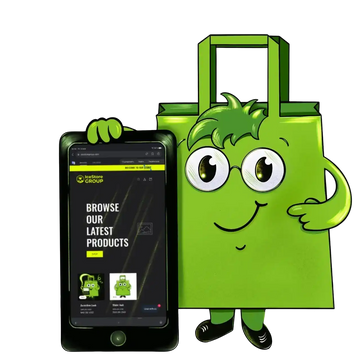Maintaining a healthy email list is just as important as maintaining clean code in your Shopify store. In eCommerce, where customer engagement directly drives sales, a neglected email list can quietly drain your revenue and damage your brand reputation.
For Shopify and Shopify Plus merchants, proper email list hygiene is not just a technical requirement — it’s a business strategy that ensures your campaigns land in inboxes, not spam folders.
What Is Email List Hygiene?
Email list hygiene is the ongoing process of keeping your subscriber list up-to-date by removing invalid, inactive, or disengaged contacts.
Why does it matter? Email providers like Gmail, Outlook, and Yahoo measure your sender reputation based on spam complaints, bounce rates, and engagement. A clean list means:
-
Higher deliverability rates
-
More accurate performance metrics
-
Lower costs (you don’t pay for sending to dead addresses)
-
Stronger customer trust
For eCommerce businesses, where the average email list decays by 22% annually, maintaining hygiene ensures your marketing ROI stays protected.
Risks of Poor List Hygiene
-
Spam complaints: Just one complaint per 1,000 emails (0.1%) can hurt your sender reputation.
-
Spam traps: Hitting inactive or fake emails signals to providers that your list is risky.
-
Legal penalties: Violating laws like CAN-SPAM may result in fines up to $53,000.
-
Revenue loss: A bloated, unengaged list inflates costs and drags down performance.
Simply put: poor hygiene = poor results.
Cleaning vs. Scrubbing: What’s the Difference?
-
Cleaning: Technical — removing invalid or bouncing emails.
-
Scrubbing: Strategic — identifying disengaged subscribers and trying to re-engage them before removal.
Together, these practices maximize deliverability and engagement.
How to Keep Your Email List Clean
Double Opt-In Confirmation
Double opt-in helps protect your email list from fake and incorrect addresses. The user enters their email and then confirms it via a confirmation email. This filter removes bots, typos, and accidental sign-ups. As a result, your database contains only genuine subscribers who are truly interested in your content.
Post-Campaign List Review
After promotions or large-scale marketing activities, your list often grows with new addresses, which may include invalid or temporary emails. Regular audits after such campaigns help remove low-quality contacts in time, ensuring subsequent campaigns remain effective.
Never Purchase Email Lists
Purchased lists almost always consist of outdated or irrelevant contacts. Such subscribers do not expect your emails, which increases the likelihood of spam complaints. Additionally, this undermines brand trust and damages sender reputation. Organic growth may be slower but builds a loyal and engaged audience.
Easy and Fast Unsubscribe
Subscribers should be able to unsubscribe with one click. If the process is hidden or complicated, users are more likely to mark your emails as spam. A clear and accessible “Unsubscribe” button reduces complaints and demonstrates respect for your subscribers’ choices.
Bounce Rate Control (<0.5%)
Bounce rate indicates how many emails were not delivered. Soft bounces (full inbox, temporary errors) should be monitored, but if an address is consistently unavailable, it should be removed. Hard bounces (nonexistent addresses) should be removed immediately. Maintaining a bounce rate below 0.5% preserves your sender reputation with email providers.
Engagement Analysis
If subscribers stop opening emails or clicking links, it’s time to review your content, subject lines, and segmentation. Sometimes the issue lies in the database, sometimes in the offers. Regular analysis of open rates, CTR, and subscriber activity allows you to identify weaknesses and maintain an engaged audience.
Flexible Email Frequency
Not all subscribers want to receive emails at the same pace. Offer options: daily, weekly, or monthly. Flexibility reduces unsubscribe rates, increases trust, and enables a more personalized communication strategy.
Regular Preference Updates
Subscribers’ interests change over time. Every six months, consider sending an email offering them the option to update their preferences — frequency of emails, types of content (news, promotions, articles). This helps maintain engagement, shows respect for your audience, and fosters long-term relationships.
Why Work With IceStoreGroup?
At IceStoreGroup, we help Shopify and Shopify Plus businesses go beyond standard solutions:
-
Custom development for unique store needs
-
Automation and integrations for marketing efficiency
-
Dropshipping support and scalable infrastructure
-
Expert strategy to boost revenue and protect deliverability
We combine technology with business insight to help you scale confidently.
📧 Email: info@icestoregroup.com
🌐 Website: https://icestoregroup.com
📱 Telegram: https://t.me/icestoregroupshopify
🔔 Follow our Telegram channel: https://t.me/icestoregroup
🔥 7-Day Free Trial 🔥
Experience IceStoreLab in action:
✅ Daily reports via Telegram and Email
✅ Competitor change history
✅ AI recommendations and visual reports
See for yourself how data turns into actionable decisions.
👉 Start your free trial now

